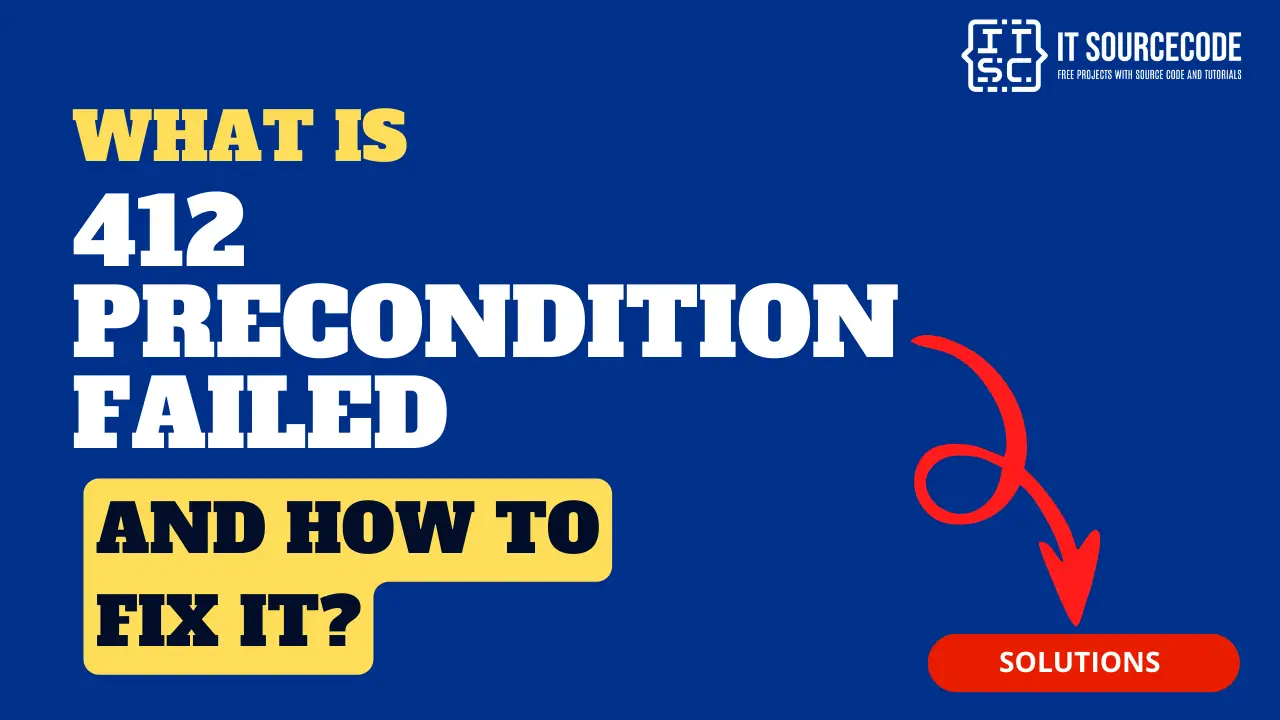One common problem you might encounter while using a website is known as “HTTP 412 precondition failed”.
Fixing a website issue can be challenging, especially when you’re unsure of the root cause.
In this article, we’ll discuss what “HTTP 412 precondition failed” means and how you can resolve it.
Are you ready? Let’s get started!
What does “412 Precondition failed” mean?
The “412 Precondition Failed” is an HTTP status code that belongs to the 4xx category of HTTP responses, which represent client errors.
It signifies that the server is unable to fulfill the client’s request because it doesn’t meet one or more conditions specified in the request headers.
As a result of this failure, the server is unable to process the client’s request.
This typically happens when the state of the resource doesn’t match the conditions set in headers like “If-Unmodified-Since” or “If-None-Match”.
In simpler terms, this occurs when a server denies access to a user because they didn’t meet certain requirements.
Root Causes of “412 Precondition failed” error
The 412 Precondition Failed error happens when a server can’t process a request because it doesn’t meet certain conditions.
Here are some usual reasons for this:
- Conditional Headers:
Headers like “If-Match,” “If-None-Match,” “If-Modified-Since,” or “If-Unmodified-Since” set the rules that need to be followed for the server to give the requested resource.
If these rules aren’t met, the server responds with a 412 Status Code.
- Wrong Precondition Headers:
A 412 error may be returned by the server if a client, like a web browser or search engine, sends precondition headers that are incorrect.
- Etag Mismatch:
This often involves making sure that the entity tags (ETags) or the last-modified dates in the headers match the current state of the resource on the server.
If a client sends an “If-Match” header with an incorrect or outdated Etag, the server sees this as a failed precondition and gives a 412 status code error.
- Server Configuration Issue:
The 412 errors may occur if your server is not properly processing or understanding precondition headers.
- Timestamp Discrepancy:
If the given timestamp doesn’t match the server’s timestamp, the precondition fails, causing a 412 Status Code error.
- Out-of-date Resources:
If a client attempts to access or change a resource that has been updated since their last interaction, a 412 error might happen.
- Problems with Caching Proxies
Sometimes, a caching proxy that’s in between can disrupt the proper operation of precondition headers, leading to 412 errors.
- Errors in Website Code
If there are mistakes in your website’s code that cause an incorrect use of conditional headers, it could lead to 412 errors.
Moreover, this problem occurs on the server side, although it could be caused by incorrect information initially provided by the client, and it signifies that the processing of this particular request has been rejected.
How to fix the “412 Precondition” failed error?
Here are some steps you can take to fix the “412 Precondition Failed” error:
Step 1: Check the Preconditions
The first step is to understand the preconditions set in your HTTP request. These are usually found in headers like ‘If-Match’, ‘If-None-Match’, or ‘If-Unmodified-Since’. Make sure these conditions are correct and necessary for your request.
Step 2: Validate the Resource State
The “412 Precondition Failed” error often means the state of the resource doesn’t match the conditions set in the request headers.
Check the current state of the resource you’re trying to access and compare it with the conditions in your request.
Step 3: Update the Preconditions
If the preconditions in your request headers are not met by the resource’s state, you may need to update these conditions.
This could mean using a more recent “If-Unmodified-Since” date, or a different ETag in the “If-Match” or “If-None-Match” headers.
Step 4: Update Timestamps
If the 412 error is due to a timestamp discrepancy, adjust it in the request headers to match either the current time or the last known modified time on the server.
This guarantees that the server accurately assesses this condition.
Step 5: Regenerate the Etag
When a 412 error happens because of an Etag mismatch, you need to create a new Etag value for the resource you’re asking for and update it on both your server and client.
This ensures that future requests, which include the correct Etag value, won’t fail the precondition check.
Step 6: Examine the Website Code
Examine your website’s code to confirm that conditional headers are properly utilized and that they match your server’s operations and your users’ expectations.
Rectify any discovered problems, and conduct comprehensive testing to make sure the issues have been fixed.
Other general troubleshooting steps may include:
- Checking the URL for errors.
- Clearing the browser’s cache and cookies.
- and restarting the browser.
Conclusion
In conclusion, we’ve talked about what “HTTP 412 precondition failed” means and how you can fix it.
This error happens when a server can’t fulfill a request because it doesn’t meet certain conditions set by the client.
By following the provided solutions above, you can rest assured that you’ll be able to resolve this issue.
For further learning, you can also check the following HTTP status code:

